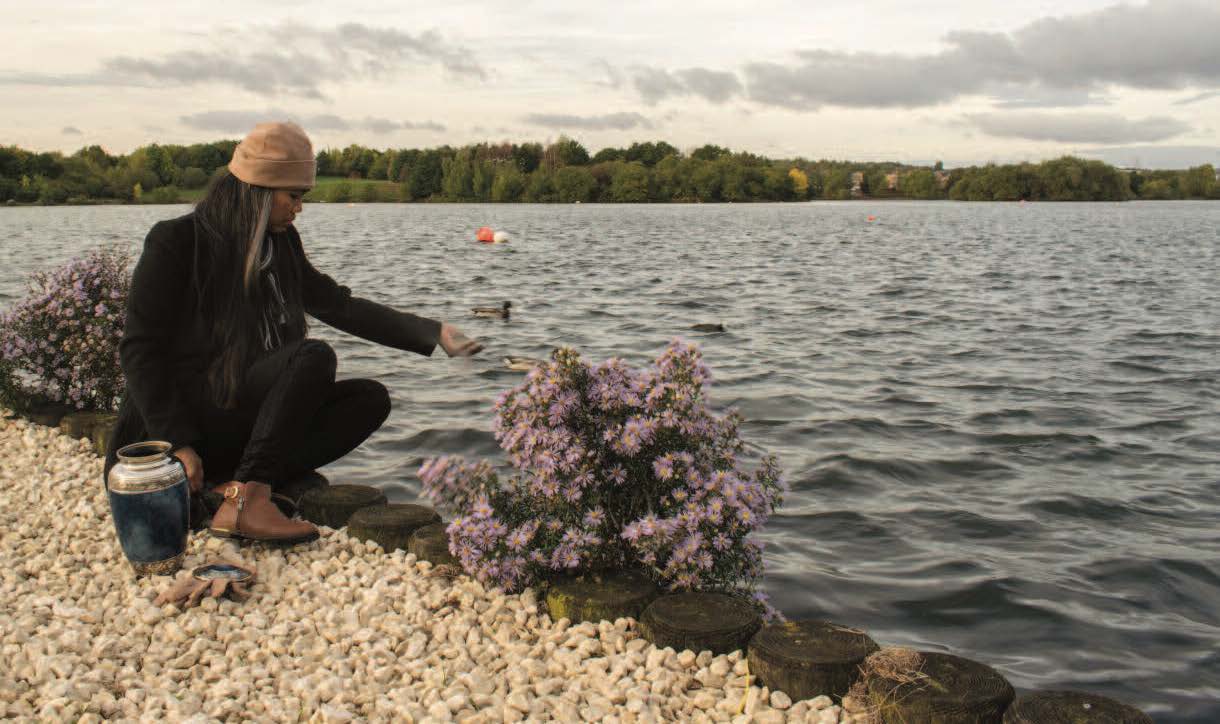By Erin Lepine, LL.B
Know your legal options
Most of us have either said, or heard someone say something along the lines of: “when I die, scatter my ashes by the lake where I spent my childhood summers,” or “when I die, bury me next to my loved ones.” But when that day comes, what can you do with your loved one’s body? Although morbid, the question is important.
If you are deciding what to do with a loved one’s last remains, the first question to ask is: do I have the legal authority to make decisions about a loved one’s remains? Although the decision maker will be specific to each case, in general the Estate Trustee will have the legal authority to make this decision. If your loved one dies without a Will, then typically the deceased’s spouse or adult children would make the decision about what to do with the last remains.
Most frequently, people choose to be either buried or cremated. But did you know that in Ontario, your options are limited if you want to be buried? Bodies can only be buried in a registered cemetery, where a “plot” is purchased as a final resting place. Some cemeteries even have a designated “green burial” section for the environmentally conscious, which will typically include an unembalmed body being buried in a biodegradable container. If cremation is preferred over burial, the options are more extensive. As with burying a body, if you wish for your ashes to be in a registered cemetery you must buy rights to scatter the cremated remains in that cemetery. Alternatively, you can buy rights to place the cremated remains within a columbarium — a structure that stores urns.
However, unlike for burials, the options for scattering cremated remains go beyond a registered cemetery. For example, you can scatter cremated remains on private property so long as there is prior consent from the landowner. You can also scatter cremated remains on unoccupied Crown lands and Crown lands covered by water. This includes provincial parks and the Great Lakes; however, you must make sure there is no sign prohibiting scattering. Finally, you can scatter cremated remains on municipally owned lands if you ensure there are no by-laws prohibiting scattering. Each municipality has different rules regarding scattering remains, so if you wish to exercise this option it will be important to confirm what is permitted in your chosen municipality before scattering the ashes.
Of course, some people may request that their ashes be scattered somewhere outside of Ontario or even outside of Canada. Travelling with cremated remains is permitted — so long as the ashes are properly stored. Ideally, if you intend to travel with a loved one’s ashes, you should speak to a funeral director about a temporary container for transportation, since some of the common materials used in urns (metal or stone) can cause an issue at security screenings. You should also carry a copy of the death certificate when travelling with a loved one’s last remains. In fact, a death certificate is legally required if travelling abroad with a loved one’s ashes. It is also important to investigate where the ashes can be legally scattered at your destination, as laws between municipalities, provinces and countries will vary.
Beyond cremation and burial, there are other less readily available options that may be comforting to many people. For example, you can use a biodegradable urn and plant a tree by placing a seed into the ashes, or you can have cremated remains blown into glass, turned into jewelry, or even used in fireworks.
The Government of Ontario has helpful information on steps to take when someone dies, including where a person can be buried, or where cremated ashes can be spread.
The Bereavement Authority of Ontario (BAO) is a not-for-profit corporation responsible for overseeing Ontario’s bereavement sector and protecting the public’s interest. The BAO regulates funeral homes and directors, cemetery operators, crematorium operators, transfer service operators, and relevant sales representatives. Under the Funeral, Burial and Cremation Services Act, 2002, cemeteries, crematoriums, funeral homes, and transfer service operators must be licensed. The BAO has an online publication called A Guide to Death Care in Ontario, which is a helpful starting point.
For more information about travelling with cremated remains, you should consult with the Canadian Air Transport Security Authority.
You and your loved ones should discuss funeral and burial wishes and outline those wishes in your Will. If you need assistance planning your final wishes, or the final wishes of a loved one, contact a lawyer with experience handling estate planning issues.
Erin Lepine is a partner with Nelligan O’Brien Payne LLP (nelligan.ca), and a member of the Family Law and Estates Law groups.
NOTE TO READERS: THE VIEWS OF THE AUTHOR DO NOT NECESSARILY REFLECT THOSE OF COYLE MEDIA GROUP. THIS ARTICLE IS PROVIDED AS A GENERAL SOURCE OF INFORMATION ONLY AND SHOULD NOT BE CONSIDERED TO BE PERSONAL INVESTMENT OR LEGAL ADVICE, OR A SOLICITATION TO BUY SERVICES. READERS SHOULD CONSULT WITH THEIR FINANCIAL OR LEGAL ADVISOR TO ENSURE IT IS SUITABLE FOR THEIR CIRCUMSTANCES.







